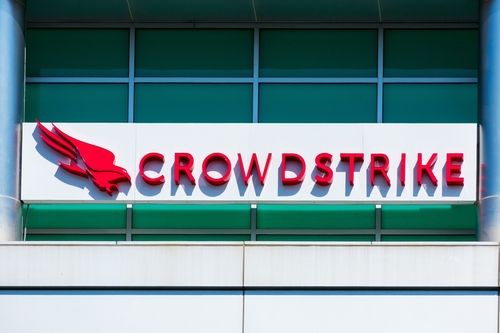2 Quality Cryptocurrencies That Could Build a Strong Foundation for Beginner Investors

Key Points
New investors need to learn many psychological and financial lessons.
Bitcoin is a great way to learn about and benefit from scarcity.
Ethereum is the prototypical blockchain finance play.
There's not much point to starting a crypto portfolio early in your investing career if you're just going to panic and sell everything at the first sign of trouble. At the same time, given crypto's volatility, investors who are just starting out should probably not stray too far from the established blockchains.
The simplest solution is a two-asset crypto stack, comprised of Bitcoin (CRYPTO: BTC) as a scarce store of value to anchor the portfolio, and Ethereum (CRYPTO: ETH) to get exposure to the growth of programmable finance. Bitcoin sets the floor, whereas Ethereum gives you upside tied to utility and developer adoption. Here's how those pieces fit together, and how to set expectations so you can actually stick with them as you gain wisdom (and hopefully wealth, too).
Where to invest $1,000 right now? Our analyst team just revealed what they believe are the 10 best stocks to buy right now. Learn More »

Image source: Getty Images.
Start with securing your supply of the scarcer asset
For long-term wealth compounding, buying a scarce asset like Bitcoin should be a higher priority for your limited pool of capital than investing in riskier plays, including Ethereum.
As you've probably heard by now, Bitcoin's protocol specifies creation of a maximum of 21 million coins of which 19.9 million already exist. Additionally, there are periodic events called halvings that occur roughly every four years that reduce the rate of new supply hitting the market.
The upshot is that if you buy Bitcoin and hold it forever, those who want to purchase it in the years after you did will, on average, be competing for a smaller float, which means that they will likely be paying higher prices for significantly less coin. As an aside, it's a lot easier to build the discipline you need for truly long-term holding when you see this process start to play out in your favor, but that tends to take at least one halving cycle.
But knowing the above doesn't eliminate risk or make it easier to hold through deep downturns, at least not until you've survived a couple without capitulating and selling.
Know that even as the anchor of your crypto portfolio, Bitcoin is volatile and subject to shifting and unpredictable policy winds. It can and will drop sharply and stay down for longer than feels comfortable. The more enthusiastic you get about buying it when prices are higher, the more depressed you will be when the bear market rolls around.
Therefore, the investor's edge with this asset is behavioral. Use small, steady buys as part of a dollar-cost averaging (DCA) strategy, keep a multiyear horizon, and size the position so your plan survives the inevitable rough patches.
Don't let your emotions interfere with the plan, and remember, the value engine keeps working whether you refresh the price or not.
The growth leg is important too
Whereas Bitcoin's growth is derived from people agreeing that it's valuable and scarce, Ethereum's growth depends on it remaining a platform for smart contracts and programmable finance.
Smart contracts are just programs that live on the blockchain and power decentralized finance (DeFi), stablecoins, tokenized funds, and more. As a result, Ethereum remains the largest venue for DeFi by total value locked (TVL), a useful proxy for on-chain economic activity. As capital tends to be sticky once it arrives in a chain, it's a reasonable bet that Ethereum will continue to be the leader.
Operating smart contracts or decentralized applications (dApps) requires holding Ethereum's native token, Ether, to pay for gas (user) fees, as well as any fees associated with the particular program being used. That creates a structural reason for investors, users, and developers to buy and hold it. It's also possible to stake Ether to gain a yield, which is another incentive for the asset to be purchased and held for long periods.
Separately, Ethereum's growth potential is large because it's a platform for an entire ecosystem of different segments, which themselves can experience growth and drive demand for the native token, or potentially attract capital inflows to the chain.
Ether also has distinct supply mechanics, though they're not as favorable to long-term holders as Bitcoin's. Its supply can shrink when network activity burns more fees than new issuance creates. For all of 2023 and 2024, net supply growth was negative, but the effect is not guaranteed to be consistent, nor is it guaranteed to create significant reduction in the circulating supply over time.
But its risks differ from Bitcoin's. Gas fees can and do spike during peak demand, and the ecosystem's breadth means having a large surface area for hacks, scams, regulatory problems, buggy applications, and failed projects.
The practical approach
For new investors, there's an easy way to apportion your portfolio in these two assets.
Treat Bitcoin as the lower-risk core, and Ethereum as the higher-growth complement. A simple starter mix is 70% Bitcoin and 30% Ethereum, rebalanced annually if desired. Understand that, despite what many people might tell you, there is no rush to accumulate either of these assets because they will both be around for many years to come.
The most important thing is to invest consistently. The second most important thing is to hold through volatility and downturns. Once you've mastered both, you will be well ahead of most of the pack.
Should you invest $1,000 in Bitcoin right now?
Before you buy stock in Bitcoin, consider this:
The Motley Fool Stock Advisor analyst team just identified what they believe are the 10 best stocks for investors to buy now… and Bitcoin wasn’t one of them. The 10 stocks that made the cut could produce monster returns in the coming years.
Consider when Netflix made this list on December 17, 2004... if you invested $1,000 at the time of our recommendation, you’d have $656,895!* Or when Nvidia made this list on April 15, 2005... if you invested $1,000 at the time of our recommendation, you’d have $1,102,148!*
Now, it’s worth noting Stock Advisor’s total average return is 1,062% — a market-crushing outperformance compared to 184% for the S&P 500. Don’t miss out on the latest top 10 list, available when you join Stock Advisor.
*Stock Advisor returns as of August 25, 2025
Alex Carchidi has positions in Bitcoin and Ethereum. The Motley Fool has positions in and recommends Bitcoin and Ethereum. The Motley Fool has a disclosure policy.





